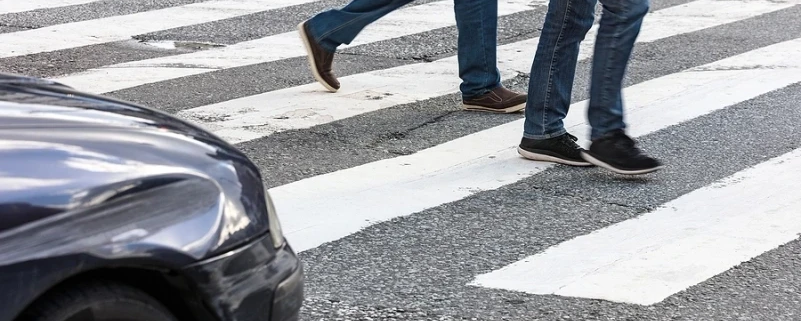Understanding the Role of Traffic Signals and Crosswalks in Pedestrian Accident Claims
Pedestrian accidents can lead to severe injuries and life-changing consequences. Understanding how traffic signals and crosswalks play a role in these cases is essential for determining liability and seeking compensation. Whether a driver or a pedestrian is at fault often depends on right-of-way laws and compliance with traffic controls.
Traffic Signals and Their Legal Implications
Traffic signals help regulate movement on the road, providing clear directions to both drivers and pedestrians. When someone disregards these signals, accidents can occur. In many cases, a pedestrian accident claim will hinge on whether the traffic signal was obeyed.
Pedestrians must follow walk signals at intersections equipped with pedestrian control devices. If a pedestrian crosses when the signal indicates “Don’t Walk,” the driver may have a stronger defense. On the other hand, if a driver ignores a red light or fails to yield when turning, they may be found liable.
Pennsylvania law requires drivers to stop for pedestrians who have the right of way. Even when a pedestrian has a walk signal, drivers must yield and allow them to cross safely. Violating these rules can result in serious legal consequences for the driver.
Crosswalks and Pedestrian Safety
Marked crosswalks provide pedestrians with designated areas to cross the street safely. Some intersections have additional features like flashing lights or pedestrian islands to improve visibility and reduce risk.
Pedestrians using a crosswalk legally have the right of way in most situations. However, this does not mean they are immune to fault. If a pedestrian suddenly steps into traffic without allowing a reasonable stopping distance, they may share responsibility for the accident.
Unmarked crosswalks can add complexity to a claim. Pennsylvania law considers any intersection an implied crosswalk, even if there are no painted lines. Drivers must yield to pedestrians crossing at intersections, whether or not a crosswalk is marked. This can become a key factor in determining liability in pedestrian accident cases.
Determining Liability in a Pedestrian Accident
In any pedestrian accident, liability depends on the actions of both parties. Investigators will consider factors such as:
- Whether the pedestrian was in a marked or unmarked crosswalk
- If the traffic signal permitted the pedestrian to cross
- Whether the driver was speeding or distracted
- If either party was impaired by alcohol or drugs
Eyewitness accounts, traffic camera footage, and accident reports can assist in determining fault. In some instances, both the driver and pedestrian may share partial responsibility. Under Pennsylvania’s modified comparative negligence rule, a pedestrian can still receive compensation if they are less than 51% at fault. However, their payout will be reduced in proportion to their level of responsibility.
The Role of Negligence in Pedestrian Accident Claims
Proving negligence is a critical part of a pedestrian accident case. The injured party must show that the driver owed a duty of care, breached that duty, and caused the accident. Running a red light, failing to yield, or driving while distracted are common forms of driver negligence.
Conversely, a pedestrian may be considered negligent if they jaywalk, cross against a signal, or fail to exercise reasonable caution. In these cases, the driver may argue that the pedestrian’s actions contributed to the accident.
Insurance companies often use claims of shared negligence to reduce payouts. Having a strong legal advocate can help counter these tactics and ensure the injured party receives fair compensation.
Recovering Compensation After a Pedestrian Accident
Pedestrian accidents often result in serious injuries such as broken bones, head trauma, or spinal cord damage. Victims may face extensive medical bills, lost wages, and ongoing rehabilitation costs.
Compensation in a pedestrian accident case may cover:
- Medical expenses, including hospital stays and physical therapy
- Lost income due to missed work
- Pain and suffering for physical and emotional distress
- Future medical care for long-term injuries
In cases where a driver’s actions were particularly reckless, punitive damages may also be awarded. These damages serve as a punishment and deterrent against dangerous driving behavior.
How Legal Representation Can Help
Navigating a pedestrian accident claim can be complicated, especially when dealing with insurance adjusters and legal defenses. An experienced attorney can gather evidence, consult experts, and negotiate with insurers to seek the maximum compensation possible.
Conclusion
If you or a loved one has been injured in a pedestrian accident, legal support can make all the difference. At Kingbird Legal, we understand the complexities of traffic laws and how they impact personal injury claims. Our team is ready to fight for your rights and help you pursue the compensation you deserve. Contact us today for a free consultation to discuss your case and explore your legal options.




